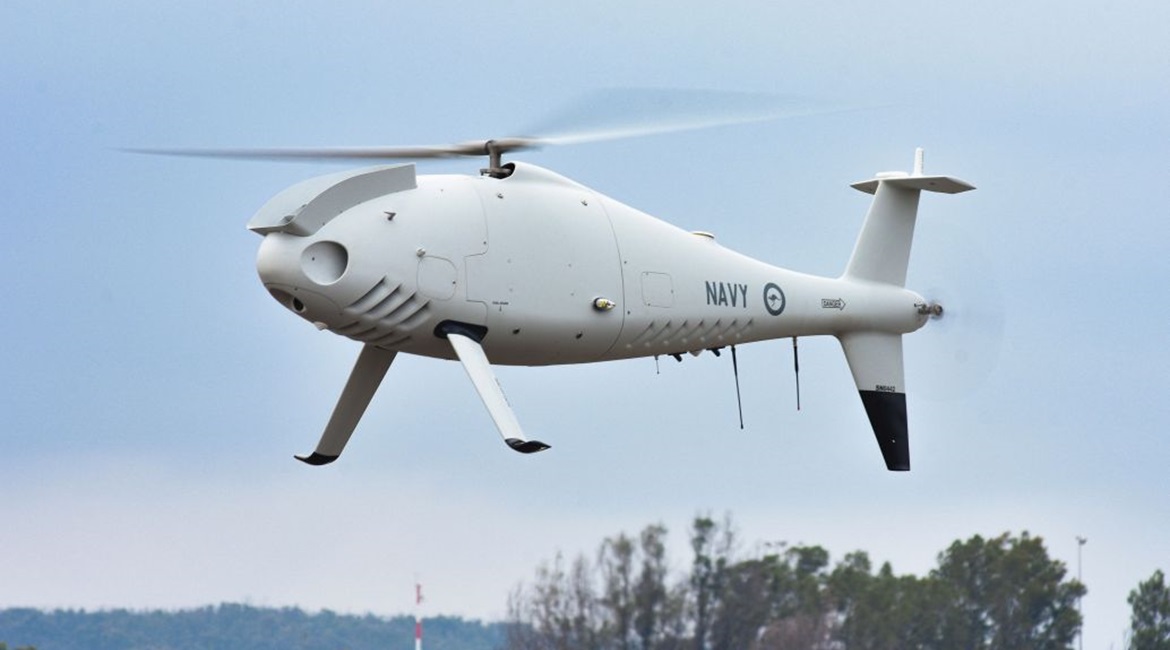
Austrian company Schiebel announced on 9 March that its newly designed S2 heavy fuel engine for the Camcopter S-100 vertical take-off and landing (VTOL) unmanned aerial vehicle (UAV) had successfully completed acceptance tests for the Royal Australian Navy (RAN).

Schiebel announced on 9 March that its newly designed S2 heavy fuel engine for the Camcopter S-100 UAV (seen here) has successfully completed acceptance tests for the RAN. (Schiebel)
“A comprehensive series of test flight activities demonstrated both the endurance, and maximum take-off weight [MTOW] – with multiple payloads – providing the evidence and assurance that the Camcopter S-100 fulfils the requirements of the RAN,” said the company in a statement.
Schiebel said the new S2 engine, which has been developed as a next-generation replacement for the current propulsion unit, increases the overall capability of the Camcopter S-100 system. The new lightweight heavy fuel engine is initially cleared for JP-5 (F-44) and Jet-A1 fuels with other fuel types set to be approved in future, it added.
The enhancements offered by the S2 engine, said Schiebel, will “enable the RAN to continue to expand their test and evaluation programme, examining advanced vertical takeoff and landing UAS capabilities” ahead of the Australian Department of Defence's Sea 129 Phase 5 programme, which seeks to equip the RAN’s future Arafura and Hunter warship classes with embarked UAS capabilities.
The latest announcement comes almost a year after Schiebel confirmed that it was developing the S2 engine for its Camcopter S-100 after its initial choice of heavy fuel engine had failed to meet the endurance requirements set by the RAN.
Andrew Watson, general manager at Schiebel Pacific, had told Jane’s
Looking to read the full article?
Gain unlimited access to Janes news and more...






